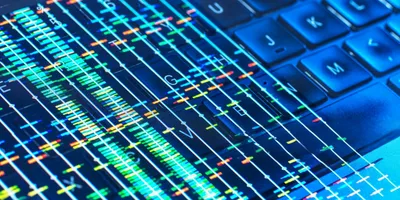Biotinylation is a crucial process in biochemistry and molecular biology. It involves attaching biotin to proteins or other macromolecules.
This highly specific and rapid technique allows researchers to study protein interactions and functions in detail. Biotin’s small size ensures that it does not significantly interfere with the natural function of the molecules it binds to, making it an attractive tool in biotechnology.
Understanding biotinylation can help you delve into various fields, including protein studies and metabolic pathway analysis. Let’s take a closer look at this process and the applications it has.
Biotinylation basics
Biotinylation involves attaching biotin to proteins, nucleic acids, or other molecules. This process is integral for various biochemical applications, enhancing detection, isolation, and functional analysis.
Chemistry of biotin and its role in biotinylation
Biotin, a water-soluble B vitamin, plays a critical role in the biotinylation process. Due to its small size (MW = 244.31 g/mol), it can efficiently bind without disrupting molecules’ natural functions in the majority of cases.
The attachment of biotin to proteins or nucleic acids leverages its strong affinity for avidin and bacteria-deprived streptavidin. Biotechnology companies like LifeSynth Solutions use biotin-streptavidin conjugation for many applications, such as immunoassays, which highlights its usefulness.
The biotinylation process and its applications
The process of biotinylation involves the covalent attachment of biotin to target proteins or other macromolecules.
This is achieved using biotinylation reagents that target specific functional groups, such as amines or carboxyl groups. This targeting can occur both in vitro and in vivo, facilitating an array of molecular biology and biochemistry applications.
These applications include things like enzyme-linked immunosorbent assays (ELISAs), Western blotting, and cell surface labeling.
Enzymatic vs chemical biotinylation
There are two main methods of biotinylation: enzymatic and chemical.
Enzymatic biotinylation uses biotin protein ligase, an enzyme that covalently bonds biotin to specific lysine residues on proteins. This highly specific method typically occurs in living cells (in vivo).
On the other hand, chemical biotinylation involves the use of biotinylation reagents to attach biotin to functional groups on target molecules. Chemical methods offer flexibility and can be applied to a broader range of molecules both in vitro and in vivo, but they may lack the specificity of enzymatic biotinylation.
By understanding these fundamentals, you can leverage biotinylation’s specificity and versatility in various research and diagnostic contexts.
Technical considerations in biotinylation
Several key factors are crucial to ensure the success of biotinylation, including optimizing reaction conditions, implementing effective purification and detection strategies, and leveraging advanced techniques and innovations.
Optimizing reaction conditions
To achieve effective biotinylation, carefully control both pH and temperature. The ideal pH usually ranges from 7.0 to 9.0 to maintain protein stability and solubility. Too acidic or too alkaline environments can denature proteins or reduce enzymatic activity.
Temperature can also impact the reaction. Ideally, perform reactions at room temperature (20-25°C). For sensitive proteins, lower temperatures can prevent denaturation.
When targeting carboxylases or glycoproteins, use specific biotinylation reagents to ensure precise attachment. Adjusting biotin to protein molar ratios, often ranging from 2.5:1 to 200:1, can also optimize labeling efficiency without compromising protein function.
Purification and detection post-biotinylation
After biotinylation, purifying the biotinylated proteins from the reaction mixture is crucial. Affinity purification techniques, such as using streptavidin-coated beads, are widely used due to biotin’s high affinity for streptavidin and avidin.
Advanced Lab Management Certificate
The Advanced Lab Management certificate is more than training—it’s a professional advantage.
Gain critical skills and IACET-approved CEUs that make a measurable difference.
Mass spectrometry provides detailed analysis and quantification of biotinylation. Additionally, immunoprecipitation can isolate biotinylated proteins, enabling further studies on protein-protein interactions.
Detection methods, such as flow cytometry and enzyme-linked assays, require high specificity and sensitivity to identify the biotin-tagged molecules accurately. Implementing multiple detection techniques can enhance the reliability of your results.
Advanced techniques and innovations
Recent advancements in biotinylation include site-specific biotinylation and the use of engineered enzymes to target specific residues. These innovations minimize the risk of altering the protein’s natural function.
Glycoprotein biotinylation using glycan-specific reagents has also improved, allowing for more precise studies of glycoprotein interactions and functions.
Leveraging newer tools such as enzymatic activity assays and high-throughput screening can enhance the accuracy and efficiency of your biotinylation processes. Integrating these innovations enables more detailed and nuanced molecular investigations.













